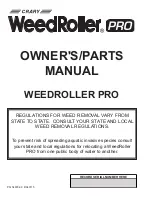
10
11
AIR HOSE CONNECTION
Connecting the air hoses to the pump:
To remove the protective caps and to connect or disconnect the air hose, push in the two
contact clips on the side of the connector. This action releases the hooks that hold the
connector in place. The protective caps should be put back on the connector if the air hose is
disconnected from the pump.
To minimise the risk of air leakage during hose connection, check:
• That the two hooks are not damaged and their clips are intact.
• That the black o-rings on the connector’s three air hoses are not cracked or missing.
• That no debris has entered the connector causing a bad connection or blocking the air
hoses.
The air hose connector is
fitted by a simple hand
motion. No special tools
are required.
The contact clips are on
the sides of the connector.
HAND CHECK TEST
Test the mattress’s function with a simple hand check.
To ensure that the mattress is providing the right therapeutic function, a simple hand check
is performed. The test should be performed each time a mattress is taken into operation
in order to detect any problems with the mattress’s air pressure. The test ensures that the
patient does not “bottom out”.
How the hand check is performed.
The hand check should always be performed when the patient is positioned on the mattress.
It is important to ask the patient not to try and lift their body during the test and to stay lying
as usual. It is not uncommon for patients to lift their body in the belief that it is easier for the
staff, but it may give an incorrect test result.
• Fold away the sheets and unzip the mattress cover to access the cells.
• Put one hand between two cells with the patient lying on the mattress.
(See illustration)
.
Depending on the size of the hand, it may sometimes be sufficient to use 2-3 finger height.
• Ensure that when the hand is in position, it fits between the bed base and the patient.
The important conclusion of the check is that there is space between the patient and
the bed base.
If the hand check shows that the patient is “bottoming out”.
If the patient is “bottoming out” and no alarm has triggered on the pump, the air pressure
should be raised
(position C on page 14)
. If the air pressure is at maximum and the patient
does not weigh more than the recommended maximum weight, then the mattress and
pump need troubleshooting by authorised personnel (see page 12).





























